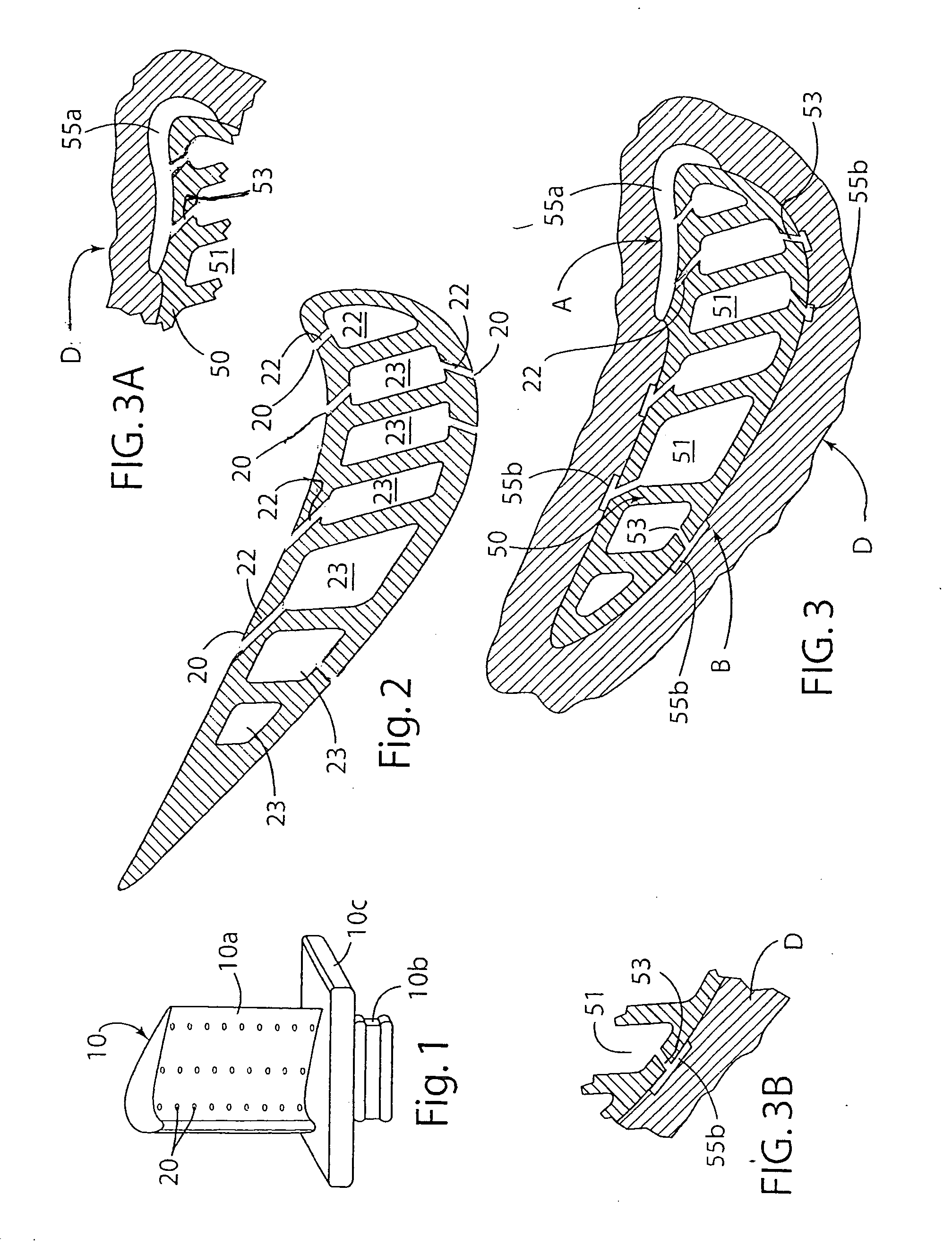Cast-in cooling features especially for turbine airfoils
a technology of cooling features and turbine airfoils, which is applied in the direction of liquid fuel engines, foundry patterns, moulding apparatus, etc., can solve the problems of complex advanced cooling schemes, limited tooling design/fabrication capabilities, and complex core complexity of advanced high-thrust aircraft engines, so as to improve the efficiency of airfoil cooling
- Summary
- Abstract
- Description
- Claims
- Application Information
AI Technical Summary
Benefits of technology
Problems solved by technology
Method used
Image
Examples
Embodiment Construction
[0025]In order to make aero and / or industrial gas turbine engine airfoil cooling air schemes most effective, especially high pressure turbine blade and vanes (hereafter turbine airfoils), internal cooling features, such as air cooling passages, support pedestals, etc. as well as external cooling features, such as film cooling air exit holes, cooling-enhancing turbulators, etc. need to precisely partition and direct the cooling air such that its pressure is controlled and it is directed to the most needed regions of the blade or vane. Practice of the present invention permits production of complex airfoil geometries with complex cast-in internal and external cooling features and enhanced external casting wall thickness control.
[0026]Although the present invention will be described below in connection with the casting of advanced turbine airfoils (e.g. gas turbine blade and vane castings) which can include complex cast-in internal and external cooling air features to improve efficienc...
PUM
| Property | Measurement | Unit |
|---|---|---|
| Solubility (mass) | aaaaa | aaaaa |
| Efficiency | aaaaa | aaaaa |
| Biodegradability | aaaaa | aaaaa |
Abstract
Description
Claims
Application Information
 Login to View More
Login to View More - R&D
- Intellectual Property
- Life Sciences
- Materials
- Tech Scout
- Unparalleled Data Quality
- Higher Quality Content
- 60% Fewer Hallucinations
Browse by: Latest US Patents, China's latest patents, Technical Efficacy Thesaurus, Application Domain, Technology Topic, Popular Technical Reports.
© 2025 PatSnap. All rights reserved.Legal|Privacy policy|Modern Slavery Act Transparency Statement|Sitemap|About US| Contact US: help@patsnap.com



